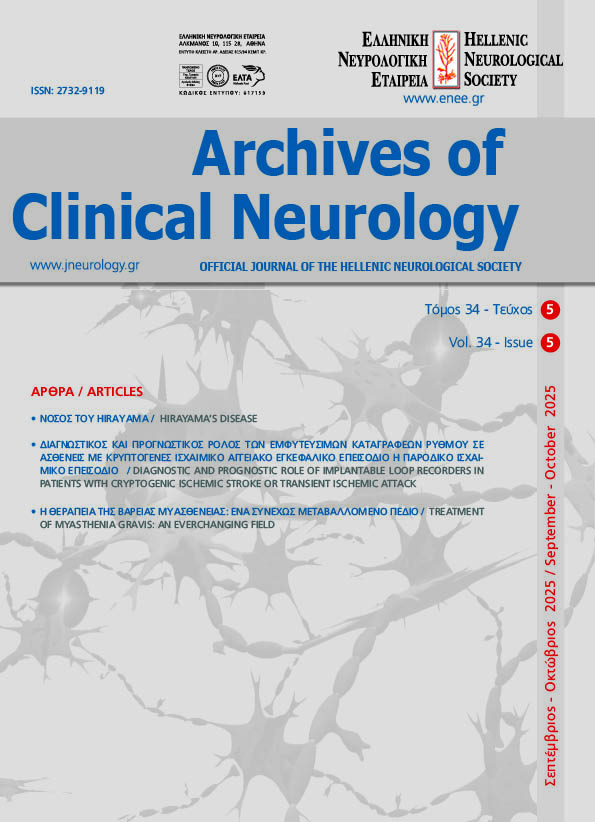DIAGNOSTIC AND PROGNOSTIC ROLE OF IMPLANTABLE LOOP RECORDERS IN PATIENTS WITH CRYPTOGENIC ISCHEMIC STROKE OR TRANSIENT ISCHEMIC ATTACK
Keywords:
Ιmplantable loop recorder; Cryptogenic ischemic stroke; Paroxysmal atrial fibrillation; Sinus pauseAbstract
Objective:
To evaluate the diagnostic yield and clinical impact of implantable loop recorders (ILRs) in patients with cryptogenic ischemic stroke (CS) or transient ischemic attack (TIA) in a real-world, tertiary care setting.
Methods:
We conducted a retrospective observational study of consecutive patients with CS or TIA who underwent ILR implantation between 2019 and 2025 across five cardiology centers in Athens, Greece. Paroxysmal atrial fibrillation (PAF) and other arrhythmias were recorded, and anticoagulation initiation and ischemic stroke recurrence were assessed.
Results:
Among 352 patients, PAF was detected in 63 (17.9%) during ILR monitoring. The median time from stroke onset to PAF detection was 190.5 days (IQR: 64–558.8). Following PAF diagnosis, 60 patients (95.2%) initiated oral anticoagulation, primarily with apixaban (n=32) and rivaroxaban (n=24). Recurrent ischemic stroke was documented in 8 patients (2.2%) of the overall cohort, with no significant differences observed between patients with and without ILR-detected PAF. In addition to AF, ILRs identified clinically significant sinus pauses in 5 patients (1.4%), all of whom subsequently received permanent pacemakers.
Conclusion:
ILRs enabled the detection of PAF and other clinically significant arrhythmias in patients with CS or TIA, facilitating timely therapeutic interventions. The observed high rate of anticoagulation initiation and low stroke recurrence support the clinical utility of ILRs in secondary prevention. These findings reinforce the broader diagnostic role of ILRs beyond PAF detection and underscore their integration into standard post-stroke evaluation pathways.


